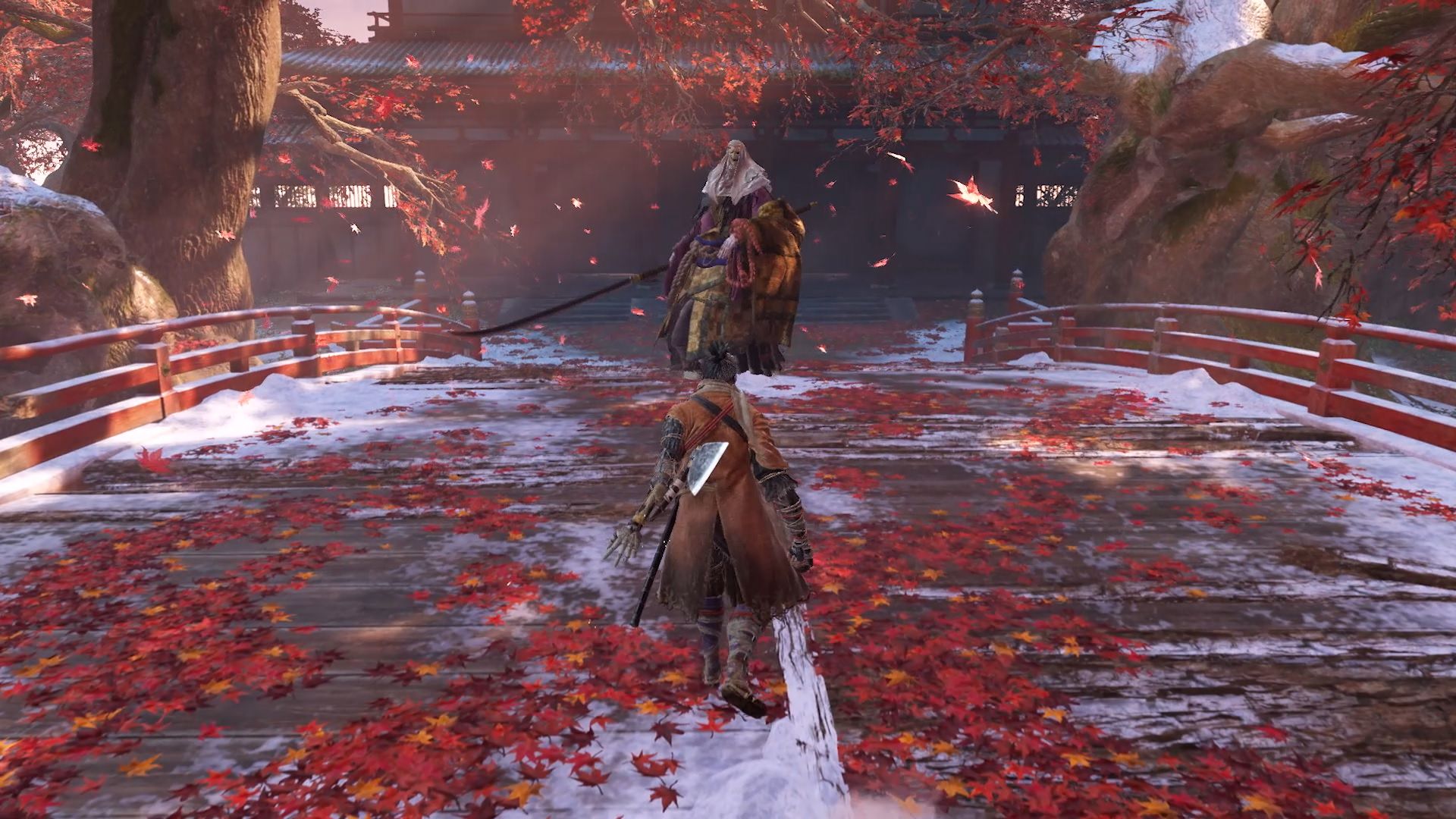
FromSoftware are good at making games writers nervous. We head along to these hands-on previews with our heads held high (metaphorically, many of us have terrible posture), confident in our ability to kick some serious digital ass and wow any observers with our mad skills. Demon’s Souls? A cake walk. Bloodbourne? Orphan of Kos was laughable, at best.
By the end of the demo, our confidence is kind of shattered. We need to go home, take a long bath, and maybe play an hour or two of Flower before we implode with self-doubt. “Well, no one else has beaten this boss yet, right?” is surely a question Activision publicists are sick of hearing. “Nope, only one player in Germany so far”, seems like a rehearsed response. Our egos are fragile, and Sekiro: Shadows Die Twice hits like a sledgehammer.
The hands-on in this case was a fairly short thirty-or-so minute look into the forthcoming title and a vague showcase of what will be FromSoftware’s biggest departure from their now famed Souls franchise. Set in a reimagined feudal Japan, it’s a samurai title with some serious chops. Stealth is the key here, more so than any of its predecessors, which presents something truly fascinating when aggressively clashed with the nuanced Souls action-RPG mechanics we’ve all come to know and hate-love.
Being that you play as a one-armed shinobi on a self-imposed rescue mission in the war-torn Sengoku period, movement is understandably different from the Soulsbourne games. Firstly, there’s an actual jump button now, and leaping from ledge to ledge is an absolute joy, greatly expanding your options when it comes to combat as you sneak up behind enemies and bust their throats open. You’ve also got a grappling hook on a prosthetic arm, which you use to leap from the roofs of temples so you can land the perfect jump-attack-kill on an unaware ninja, or silently slink past a giant serpent who can easily gobble you up in an instant. Settings become chess boards, and navigating the area before formulating your strategy is highly recommended.
As far as the demo goes, you’re equipped with the sharp and shiny Kusabimaru katana and will rely on it for most of the combat, although there are other alt-weapons that can be quickly toggled, like an axe imbued with fire (slow but extremely valuable) or the shuriken, used to dispatch distant enemies quite easily. Different combos can be worked up once you get used to switching between these options, adding a dimension to the combat mechanics that feels just as nimble and vital as the traversal mechanics. This alone takes Sekiro far from the Soulsbourne titles and stands it on its own.
Another distinctive element is the refined and very central postural system, replacing ‘stamina’ with a posture meter which you can fill by breaking an enemies stance before being able to perform a devastating, bloody, fucking awesome ‘death blow’ (and they can do the same to you). Filling it is a matter of striking enemies successfully, which requires you to master the art of parrying and predise dodges. Yep, parrying is a bigger focus here than it ever was in Dark Souls or Bloodbourne, and with enemies now being speedier and harder to predict, that presents a fairly steep learning curve. The plus side is that each and every fight, whether it’s with a plump mini-boss or an inconsequential foot soldier, feels like a beautifully choreographed dance – one that always ends in copious amounts of blood, and feels much more rewarding. You earn each and every kill.
Three different bosses – two minis and a main – was pretty much all this quick demo was. So I can’t tell you much aside from the fact that masochistic players who gleefully squeal with every “You Died” animation will find plenty to love here. But it’s not just about the difficulty. These cracked and broken visions of ancient Japan feel very lived-in, with mountainous temple settings looking like some of the developer’s finest work to date. Fill that with rich, detailed lore and sketch on a bit of familiarity from the Soulsbourne series and you’ve got a clear frontrunner for potential Game of the Year.
That’s it for now, until our full review of the game ahead of its March 22nd release date in Australia. You’re just going to have to make do with this newly released trailer until then.
